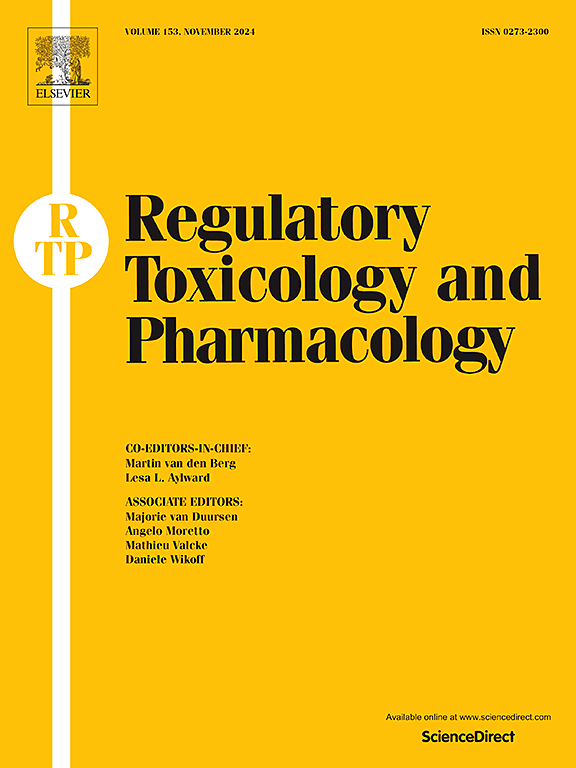Points to consider regarding the use and implementation of virtual controls in nonclinical general toxicology studies
IF 3
4区 医学
Q1 MEDICINE, LEGAL
引用次数: 0
Abstract
The replacement of a proportion of concurrent controls by virtual controls in nonclinical safety studies has gained traction over the last few years. This is supported by foundational work, encouraged by regulators, and aligned with societal expectations regarding the use of animals in research. This paper provides an overview of the points to consider for any institution on the verge of implementing this concept, with emphasis given on database creation, risks, and discipline-specific perspectives.
在非临床普通毒理学研究中使用和实施虚拟对照的注意事项
在过去几年中,在非临床安全性研究中用虚拟对照组取代一定比例的同期对照组的做法越来越受到重视。这得到了基础研究工作的支持、监管机构的鼓励以及社会对在研究中使用动物的期望。本文概述了即将实施这一概念的任何机构需要考虑的要点,重点是数据库创建、风险和特定学科的观点。
本文章由计算机程序翻译,如有差异,请以英文原文为准。
求助全文
约1分钟内获得全文
求助全文
来源期刊
CiteScore
6.70
自引率
8.80%
发文量
147
审稿时长
58 days
期刊介绍:
Regulatory Toxicology and Pharmacology publishes peer reviewed articles that involve the generation, evaluation, and interpretation of experimental animal and human data that are of direct importance and relevance for regulatory authorities with respect to toxicological and pharmacological regulations in society. All peer-reviewed articles that are published should be devoted to improve the protection of human health and environment. Reviews and discussions are welcomed that address legal and/or regulatory decisions with respect to risk assessment and management of toxicological and pharmacological compounds on a scientific basis. It addresses an international readership of scientists, risk assessors and managers, and other professionals active in the field of human and environmental health.
Types of peer-reviewed articles published:
-Original research articles of relevance for regulatory aspects covering aspects including, but not limited to:
1.Factors influencing human sensitivity
2.Exposure science related to risk assessment
3.Alternative toxicological test methods
4.Frameworks for evaluation and integration of data in regulatory evaluations
5.Harmonization across regulatory agencies
6.Read-across methods and evaluations
-Contemporary Reviews on policy related Research issues
-Letters to the Editor
-Guest Editorials (by Invitation)

 求助内容:
求助内容: 应助结果提醒方式:
应助结果提醒方式:


